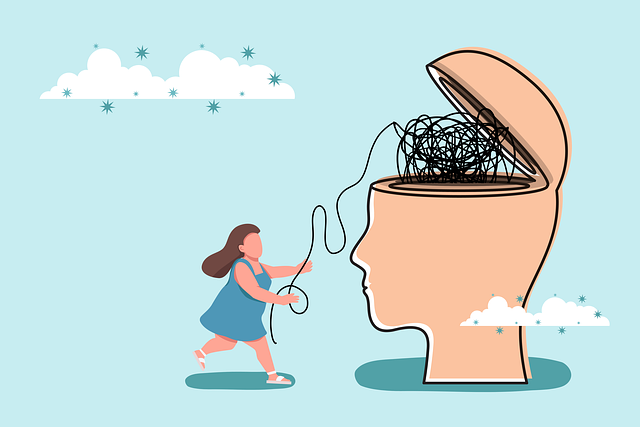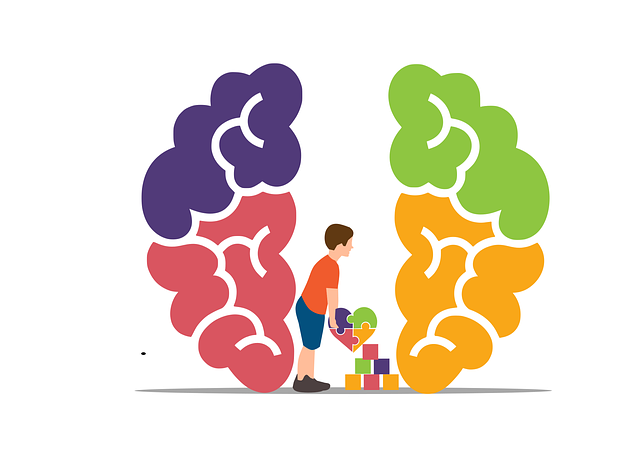Healthcare provider burnout, driven by factors like heavy workloads and poor work relationships, poses significant risks to both professionals' well-being and patient care quality. Addressing this issue requires a multi-faceted approach involving policy changes, public awareness, mindfulness practices, and workplace interventions. Organizations can foster resilient environments through work-life balance policies, mental health resources, open communication, emotional intelligence training, and conflict resolution techniques. Healthcare professionals themselves can prevent burnout through self-care strategies like exercise, sleep, and therapy, which enhance job satisfaction and resilience. Superior Relationship Issues Therapy (SRIT) emerges as a novel approach, focusing on interpersonal relationships and communication skills to reduce stress, improve mood, and mitigate feelings of isolation. Community outreach programs centered around SRIT further bolster supportive work environments, crucial for long-term burnout prevention.
Healthcare provider burnout is a growing concern, impacting not just individuals but the broader healthcare system. This article explores comprehensive strategies to prevent burnout among healthcare professionals. We delve into understanding burnout’s root causes and signs, offering insights for both providers and organizations. Additionally, we highlight effective self-care practices and introduce innovative approaches like Superior Relationship Issues Therapy, demonstrating a holistic path to mitigate burnout and promote well-being in the medical community.
- Understanding Burnout: Recognizing Signs and Causes in Healthcare Providers
- Building Resilient Workplaces: Organizational Strategies for Burnout Prevention
- Enhancing Self-Care Practices: Tools for Healthcare Professionals to Thrive
- Superior Relationship Issues Therapy: A Novel Approach to Mitigate Burnout and Foster Well-being
Understanding Burnout: Recognizing Signs and Causes in Healthcare Providers

Burnout among healthcare providers is a growing concern, impacting not only individual well-being but also patient care and the overall healthcare system. Understanding burnout involves recognizing both its signs and underlying causes, which are often complex and multifaceted. Healthcare providers may exhibit emotional exhaustion, depersonalization, and reduced personal accomplishment, signaling a state of chronic stress and dissatisfaction.
Several factors contribute to this phenomenon, including heavy workload, long working hours, lack of control over work processes, insufficient rewards, and poor relationship issues within the healthcare setting. The importance of addressing burnout cannot be overstated, especially in light of its potential impact on patient safety and the quality of care. Strategies such as Mental Health Policy Analysis and Advocacy, Public Awareness Campaigns Development, and incorporating practices like Mindfulness Meditation can help mitigate these challenges.
Building Resilient Workplaces: Organizational Strategies for Burnout Prevention

Building resilient workplaces is a critical component of healthcare provider burnout prevention strategies. Organizations can foster a supportive environment that prioritizes employee well-being and professional development. This involves implementing policies that encourage work-life balance, providing access to mental health resources such as Superior Relationship Issues Therapy, and promoting a culture of open communication where staff feel safe to express concerns and seek support. Additionally, organizations should invest in training programs focused on emotional intelligence and mindfulness meditation to enhance coping mechanisms and stress resilience among healthcare providers.
Conflict resolution techniques are another essential tool for burnout prevention. Effective conflict management strategies can reduce workplace tension and improve team dynamics, thereby creating a more harmonious environment. By equipping employees with the skills to navigate disagreements constructively, organizations can mitigate potential sources of stress and foster a sense of unity and collaboration. These efforts contribute to a healthier, more fulfilling work experience for healthcare providers, ultimately reducing burnout rates and enhancing patient care.
Enhancing Self-Care Practices: Tools for Healthcare Professionals to Thrive

Healthcare professionals often find themselves at the forefront of providing support and care to others, which can lead to burnout if self-care practices are neglected. Enhancing self-care routines is a proactive approach for healthcare providers to thrive in their roles and maintain a positive work-life balance. This involves incorporating activities that nurture both physical and mental well-being, such as regular exercise, adequate sleep, and engaging in hobbies outside of work.
One effective tool for self-care among healthcare workers is therapy, which can help address any underlying relationship issues or superior emotional challenges. Crisis intervention guidance and conflict resolution techniques learned through therapy sessions equip professionals with valuable skills to manage stress and difficult situations. Additionally, emotional healing processes facilitated by therapists contribute to the overall resilience of healthcare providers, enabling them to better support their patients while maintaining their own mental health.
Superior Relationship Issues Therapy: A Novel Approach to Mitigate Burnout and Foster Well-being

In today’s demanding healthcare landscape, burnout among providers is a growing concern. Traditional coping strategies often fall short in addressing the deep-rooted issues that contribute to this crisis. This is where Superior Relationship Issues Therapy (SRIT) emerges as a novel approach. SRIT focuses on improving interpersonal relationships and communication skills, which are essential for managing stress and preventing burnout. By facilitating open dialogue and fostering emotional connections within professional networks, SRIT empowers healthcare providers with enhanced coping skills and improved mood management.
Implementing community outreach programs centered around SRIT can further mitigate burnout. These programs encourage collaboration and support among healthcare workers, creating a sense of belonging and reducing feelings of isolation. Through group therapy sessions and educational workshops, healthcare professionals learn effective strategies for dealing with challenging relationships, thereby enhancing job satisfaction and overall well-being. This holistic approach not only addresses individual needs but also cultivates a supportive work environment that is vital for preventing burnout in the long term.
Burnout among healthcare providers is a growing concern, but by implementing targeted strategies, organizations can create more resilient work environments. From recognizing early signs of burnout and addressing root causes to prioritizing self-care practices and exploring innovative therapies like Superior Relationship Issues Therapy, these measures are essential in fostering well-being and mitigating burnout. By adopting comprehensive approaches, the healthcare industry can better support its professionals and ensure high-quality patient care for years to come.














